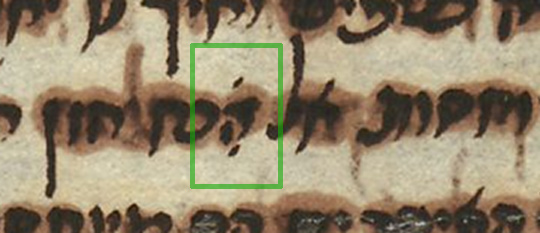| Example | <condition>
<p>There are lacunae in three places in this
manuscript. After 14v two
leaves has been cut out and narrow strips leaves remains in the spine. After
68v one gathering is missing and after 101v at least one gathering of 8 leaves
has been lost. </p>
<p>Several leaves are damaged with tears or holes or have a
irregular shape. Some of the damages do not allow the lines to be of full
length and they are apparently older than the script. There are tears on fol.
2r-v, 9r-v, 10r-v, 15r-18v, 19r-v, 20r-22v, 23r-v, 24r-28v, 30r-v, 32r-35v,
37r-v, 38r-v, 40r-43v, 45r-47v, 49r-v, 51r-v, 53r-60v, 67r-v, 68r-v, 70r-v,
74r-80v, 82r-v, 86r-v, 88r-v, 89r-v, 95r-v, 97r-98v 99r-v, 100r-v. On fol. 98
the corner has been torn off. Several leaves are in a bad condition due to
moist and wear, and have become dark, bleached or
wrinkled. </p>
<p>The script has been
touched up in the 17th century with black ink. The touching up on the following
fols. was done by
<name>Bishop Brynjólf Sveinsson</name>: 1v, 3r, 4r, 5r,
6v, 8v,9r, 10r, 14r, 14v, 22r,30v, 36r-52v, 72v, 77r,78r,103r, 104r,. An
AM-note says according to the lawman
<name>Sigurður Björnsson</name> that the rest of the
touching up was done by himself and another lawman
<name>Sigurður Jónsson</name>.
<name>Sigurður Björnsson</name> did the touching up
on the following fols.: 46v, 47r, 48r, 49r-v, 50r, 52r-v.
<name>Sigurður Jónsson</name> did the rest of the
touching up in the section 36r-59r containing
<title>Bretasögur</title>
</p>
</condition> |

























